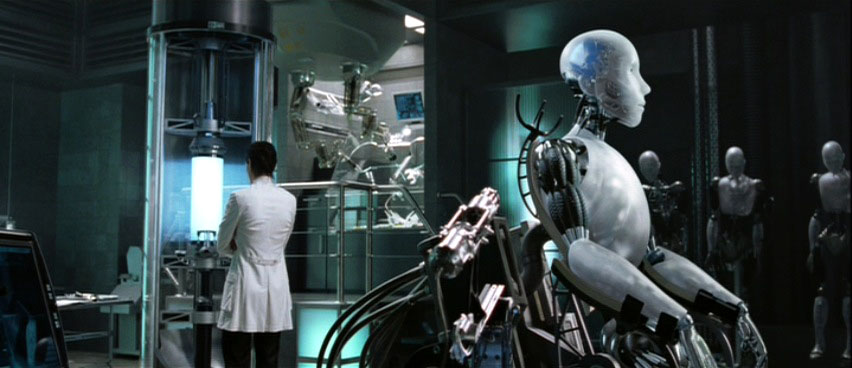Patrick Tatopoulos

But sometimes they just do it on their own because they don’t have time to look for you. That’s why you need to design everything and model as much as possible. There’s no way you design just what’s to be built on stage. You have to do more than just the concept art today. Years ago when we did Bram Stoker’s Dracula it was sketches first, then the production designer took all those elements and they drafted the sets. Then the matte painter and model makers would come look at what extensions were needed. Today, the art department requires 3D upfront. And sometimes we do outputs because the director wants to see them outside of the computer. We’ll create an output in 3D of the castle to scale and the director can look at it and say, Wow, I can fly the creatures in this way. We’ll add this to the base of the whole village tabletop model. For directors to be able to see that to scale and walk around and take pictures with their own camera is great. But to do that you have to design the whole castle, not just what you’ll be building.
AS: With all the up-front visualization that we’re seeing on a show like Mandalorian, do you think the industry will shift and they will start bringing on a visual effects supervisor before they bring on the production designer?
PT: We’re not there yet but we’re starting to get to a place where the two of them are hired at the same time. For that very reason you have to clearly establish the look and design of your project. If you have a good relationship with your director and you also work collaboratively with your visual effects supervisor, you’re gonna come on strong. They know you’re the designer. But it’s not a new concept that production designer and visual effects supervisor could become one job.
The problem the studios have to resolve is visual effects, not construction so much. Visual effects are like three, four, ten times the budget of construction sometimes. So from that perspective, the studios are going to look closer at visual effects. They are going to start talking to those guys up front, not because they think the visual effects house should design the movie but only because they better figure out how to make that stuff work. So they talk to them. For example, on this Netflix movie they started developing one character because they wanted to make sure it was going to work. But when you scatter the design project between ten, fifteen concept artists in multiple visual effects houses, nobody’s really designing, and that’s a pity.
The reason I like designing everything at the beginning, is that I take pride in it. This is why I’m here, why I went into this business! And you work with teams of artists who are going to make whatever you do ten times better than what you created. My gut feeling is that in the end art and visual effects are going to melt down into one department.
AS: What advice would you have for someone going from low budget movies to big ones?
PT: Ask yourself what kind of production designer you are. Are you a great coordinator-type that likes to assemble visuals to bring out your vision, but is not necessarily a hands-on conceptual guy that can draw? If so, I would say start by framing yourself with great concept artists.
patrick tatopoulus’s designs for creatures are amazing such as the beast in outlander and pitch black, its good to know those creatures will always live on in the films they appear in.